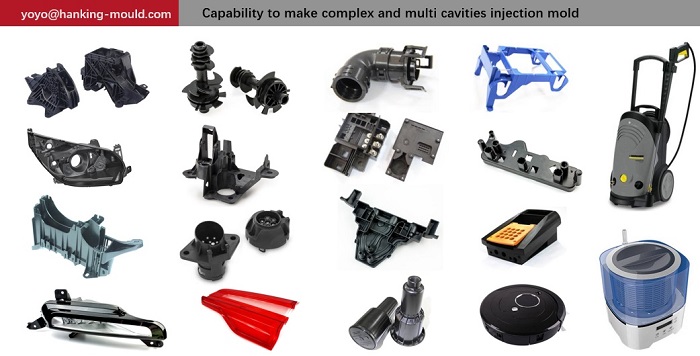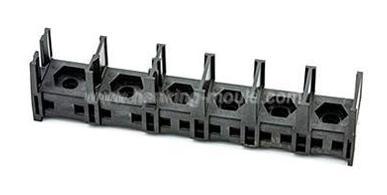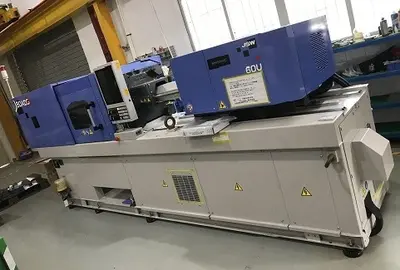

Thermosetting and thermoplastic plastics are one of the most important comparisons in the manufacturing industry. Thermoplastic polymers are the most common type of polymer used in injection molding and other plastic processing techniques. However, the surface treatment of thermosetting plastics has sparked fierce competition. Although these plastic polymers have some similarities, there are also some significant differences.
In some cases, thermoplastic is the best choice, while in other cases thermosetting materials are required. The similarity of these polymers often leads manufacturers to use them in similar products. However, this may affect the quality and durability of the final product. Next, let's learn about the various differences between these polymers.
Although these resins have some similar characteristics, you must pay attention to some differences. We will investigate the main differences between thermoplastic and thermosetting plastics under the following headings:
Thermosetting plastics are composed of highly cross-linked molecular lines. As mentioned earlier, this cross-linking creates a rigid molecular structure. You can heat them up for the first time and shape them into any structure you want. However, they eventually became sturdy and stiff. This stiffness is permanent and can prevent them from being reshaped.
On the other hand, thermoplastic materials do not have cross-linked molecular chains. There are no chemical bonds connecting the chains, only intermolecular forces. As a result, their macromolecules are mainly located next to or beside each other. When high temperature is applied, the chains will move slightly towards each other. Therefore, plastic can be easily reshaped and reshaped.
Considering physical and chemical properties is crucial in material selection to ensure optimal performance. The following is a detailed comparison of the characteristics of thermosetting and thermoplastic plastics:
The main difference between thermosetting plastics and thermoplastic plastics lies in their behavior when heated. The melting point of thermosetting plastics is higher than the degradation temperature, while the melting point of thermoplastic plastics is lower.
When heated after curing, thermosetting plastics will maintain their solid state. On the other hand, thermoplastic will melt or decompose upon further heating. Therefore, the melting point of thermosetting plastics is higher than that of thermoplastic plastics. This is why manufacturers use thermoplastic materials for recyclable components.
Both types of plastic polymers can fully resist rust or corrosion. Therefore, they are suitable for outdoor applications and can come into contact with corrosive media. However, thermoplastic plastics are more resistant to chemical attack than thermosetting plastics. Therefore, they are more resistant to corrosion.
If you want to manufacture cars or appliances, you must ensure heat resistance and durability. Thermosetting materials are more durable than similar materials. These plastic polymers are usually lighter and have excellent strength, toughness, and impact resistance. You can even use reinforcement materials such as glass fiber and carbon fiber to further strengthen them. Their excellent structural advantages and dimensional stability make them more suitable for durability than thermoplastic plastics.
The processing of thermoplastic materials can be accomplished using various methods, including injection molding, extrusion molding, vacuum molding, and thermoforming. Thermoplastic is an excellent thermal insulator. Therefore, compared to other plastics, their cooling time is longer.
Most manufacturers use rapid cooling to achieve high output rates by placing them in a water bath or spraying them with cold water. After cooling, the plastic material shrinks, affecting its crystallization and internal structure. Therefore, the shrinkage rate of thermoplastic must be specified.
On the other hand, the processing of thermosetting plastics is carried out in their liquid form. The main processes used are resin transfer molding (RTM) and reaction injection molding (RIM). The curing process usually includes inhibitors, curing agents, plasticizers, hardeners, or fillers. The choice of reinforcement will depend on the expected outcome.
We specialize in the research and development, production, sales, and service of plastic injection molds and injection molding processes for 20 years, contact yoyo@hanking-mould.com for your injection mould projects.
Our product include below:







 Call us on:
Call us on:  Email Us:
Email Us:  No.23, XingYi Road, Wusha Community, Chang'an Town, Dongguan City, Guangdong Province, China.
No.23, XingYi Road, Wusha Community, Chang'an Town, Dongguan City, Guangdong Province, China.